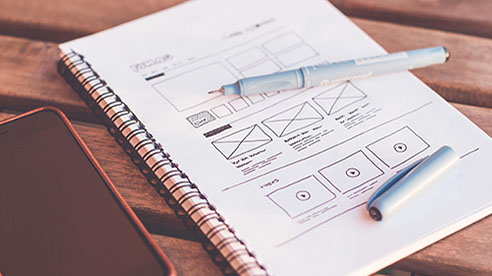
In today's digital age, creating a website that is accessible to all users is not just a best practice; it's a necessity. Accessibility in web design ensures that everyone, including individuals with disabilities, can navigate, understand, and interact with your website effectively. This approach not only caters to a diverse audience but also brings several significant benefits to businesses and their users.
One of the primary reasons to prioritize accessibility is legal compliance. Many countries have enacted laws and regulations that require websites to be accessible to people with disabilities. In the United States, the Americans with Disabilities Act (ADA) mandates that public websites must be accessible. Failing to meet these requirements can lead to legal consequences, including lawsuits and fines. Ensuring your website is accessible helps you stay compliant and avoid potential legal issues.
An accessible website also provides a better user experience for everyone. Features like clear navigation, readable text, and intuitive layouts benefit all users, not just those with disabilities. When users find a website easy to use, they are more likely to stay longer, engage with the content, and return in the future. This improved user experience can lead to increased traffic and higher user satisfaction.
Accessibility can also positively impact your search engine optimization (SEO) efforts. Search engines favor sites that offer a good user experience, and many accessibility best practices overlap with SEO best practices. For instance, using descriptive alt text for images not only helps visually impaired users but also improves search engine indexing. By making your website accessible, you enhance its visibility in search engine results, potentially attracting more visitors.
Moreover, an accessible website allows you to reach a broader audience, including the millions of people with disabilities. This can lead to increased traffic, engagement, and potentially more customers or clients. By not excluding any segment of the population, you maximize your website's reach and inclusivity.
Demonstrating a commitment to accessibility can enhance your brand’s reputation. It shows that your business values inclusivity and is dedicated to serving all users. This positive perception can lead to greater customer loyalty and trust. Customers are more likely to support and recommend brands that prioritize accessibility and inclusiveness.
There are several key elements to consider when designing an accessible website. Keyboard navigation is essential, as it ensures that all interactive elements on your website can be accessed and operated using a keyboard. This is crucial for users who cannot use a mouse. Providing descriptive alt text for all images on your site helps screen readers convey the content of images to visually impaired users, improving their browsing experience.
Readable text is another important aspect. Using a readable font size and contrast ratio ensures that text is easily readable. Avoid using overly decorative fonts that can be difficult to decipher. Proper HTML structure is also vital; using semantic HTML elements like headings, lists, and landmarks helps screen readers interpret and navigate the content correctly.
For video and audio content, providing transcripts ensures that users with hearing impairments can access the information. Additionally, a responsive design that works well on various devices and screen sizes benefits users with different types of devices and those who use screen magnifiers. Clear labeling of all form elements and providing easy-to-understand instructions or error messages are also important for accessibility.
To ensure your website meets accessibility standards, follow the Web Content Accessibility Guidelines (WCAG). These guidelines provide a comprehensive framework for creating accessible web content. Utilizing accessibility testing tools such as WAVE, Axe, and Lighthouse can help you evaluate and improve your website's accessibility. Conducting usability testing with individuals who have disabilities provides direct feedback on your site's accessibility and helps identify areas for improvement.
Prioritizing accessibility in web design is essential for creating an inclusive, user-friendly online experience. It not only helps you comply with legal requirements but also enhances your website’s usability, reach, and reputation. By implementing accessible design practices, you ensure that your website can be enjoyed by everyone, regardless of their abilities. Investing in accessibility is investing in the future of your website and the satisfaction of all its users. So, start making your website more accessible today and reap the benefits of a truly inclusive online presence.